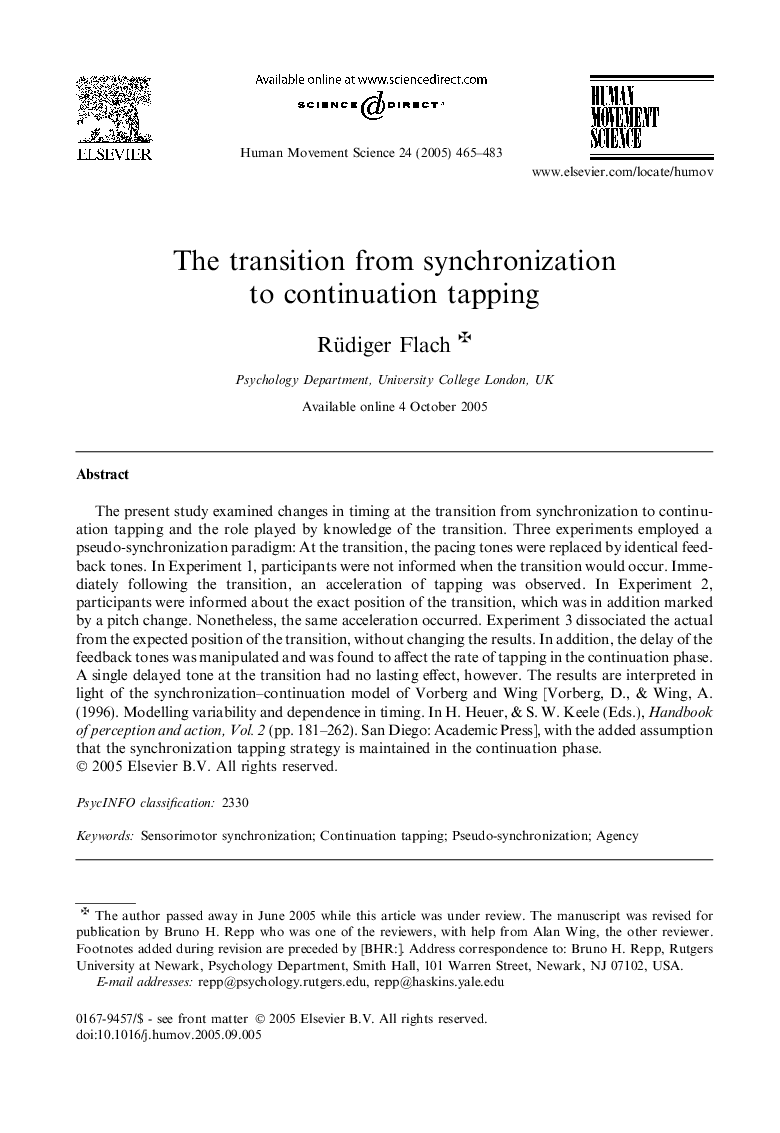| کد مقاله | کد نشریه | سال انتشار | مقاله انگلیسی | نسخه تمام متن |
|---|---|---|---|---|
| 10459295 | 922424 | 2005 | 19 صفحه PDF | دانلود رایگان |
عنوان انگلیسی مقاله ISI
The transition from synchronization to continuation tapping
دانلود مقاله + سفارش ترجمه
دانلود مقاله ISI انگلیسی
رایگان برای ایرانیان
موضوعات مرتبط
علوم زیستی و بیوفناوری
علم عصب شناسی
علوم اعصاب شناختی
پیش نمایش صفحه اول مقاله

چکیده انگلیسی
The present study examined changes in timing at the transition from synchronization to continuation tapping and the role played by knowledge of the transition. Three experiments employed a pseudo-synchronization paradigm: At the transition, the pacing tones were replaced by identical feedback tones. In Experiment 1, participants were not informed when the transition would occur. Immediately following the transition, an acceleration of tapping was observed. In Experiment 2, participants were informed about the exact position of the transition, which was in addition marked by a pitch change. Nonetheless, the same acceleration occurred. Experiment 3 dissociated the actual from the expected position of the transition, without changing the results. In addition, the delay of the feedback tones was manipulated and was found to affect the rate of tapping in the continuation phase. A single delayed tone at the transition had no lasting effect, however. The results are interpreted in light of the synchronization-continuation model of Vorberg and Wing [Vorberg, D., & Wing, A. (1996). Modelling variability and dependence in timing. In H. Heuer, & S. W. Keele (Eds.), Handbook of perception and action, Vol. 2 (pp. 181-262). San Diego: Academic Press], with the added assumption that the synchronization tapping strategy is maintained in the continuation phase.
ناشر
Database: Elsevier - ScienceDirect (ساینس دایرکت)
Journal: Human Movement Science - Volume 24, Issue 4, August 2005, Pages 465-483
Journal: Human Movement Science - Volume 24, Issue 4, August 2005, Pages 465-483
نویسندگان
Rüdiger Flach,